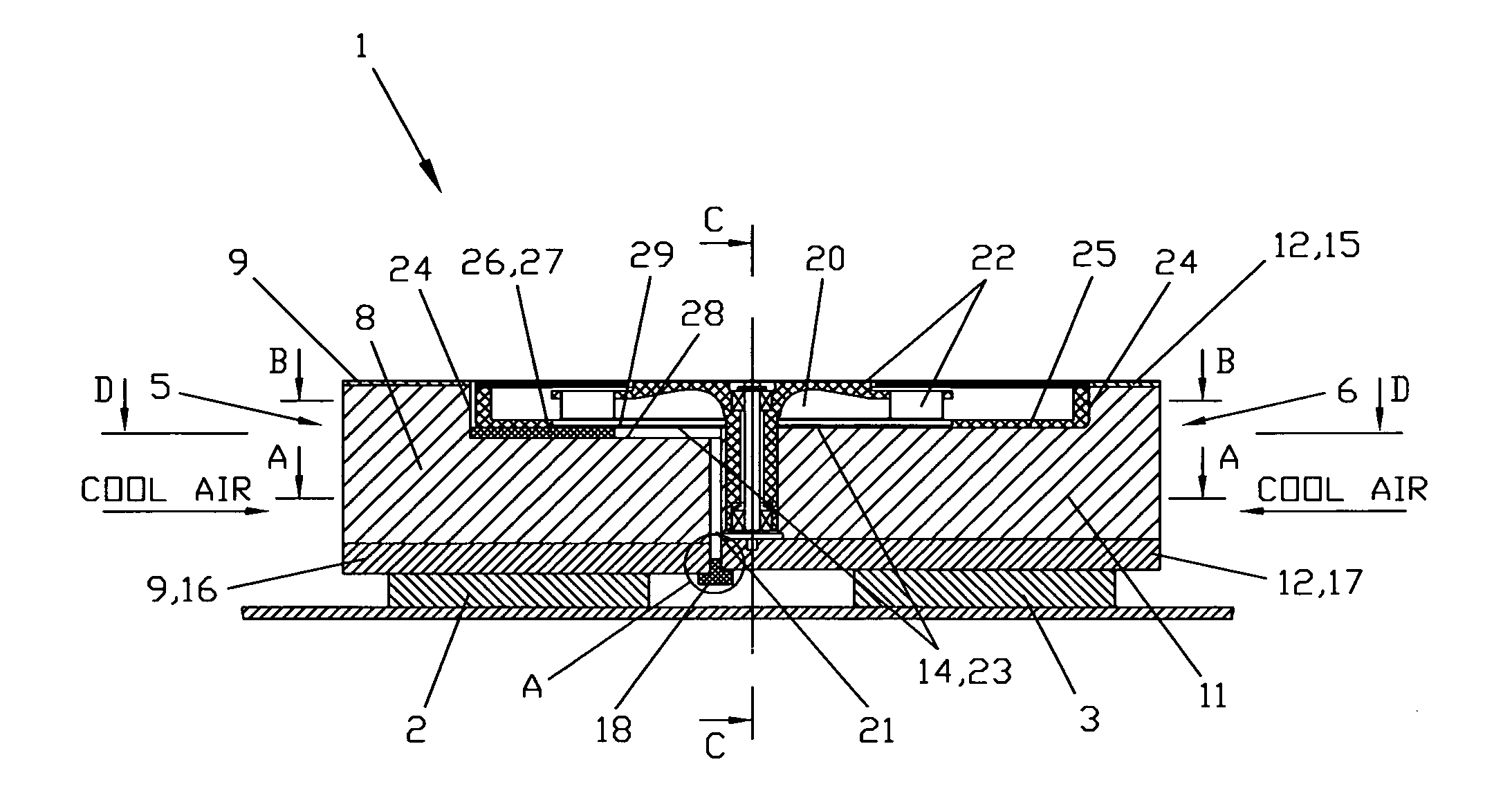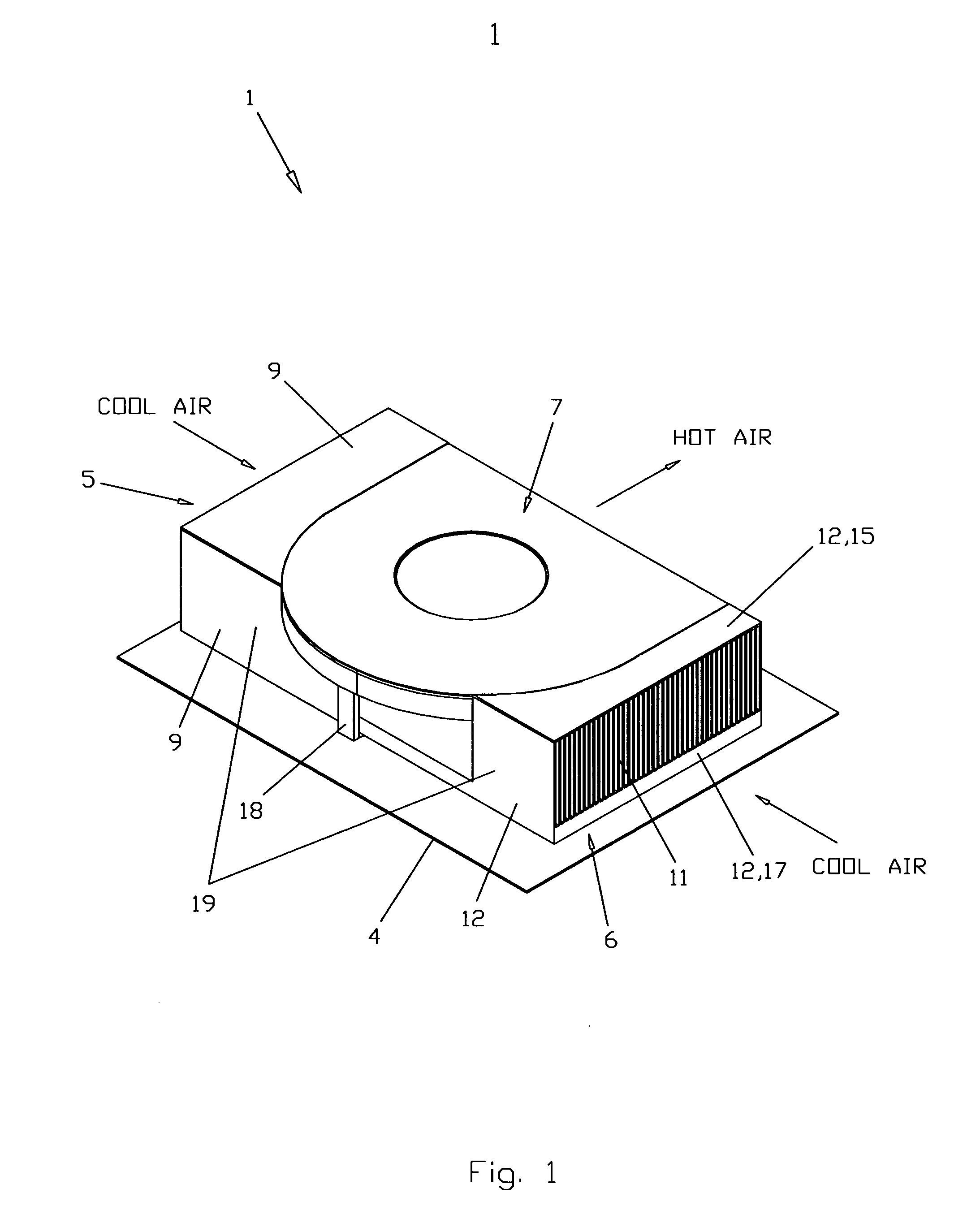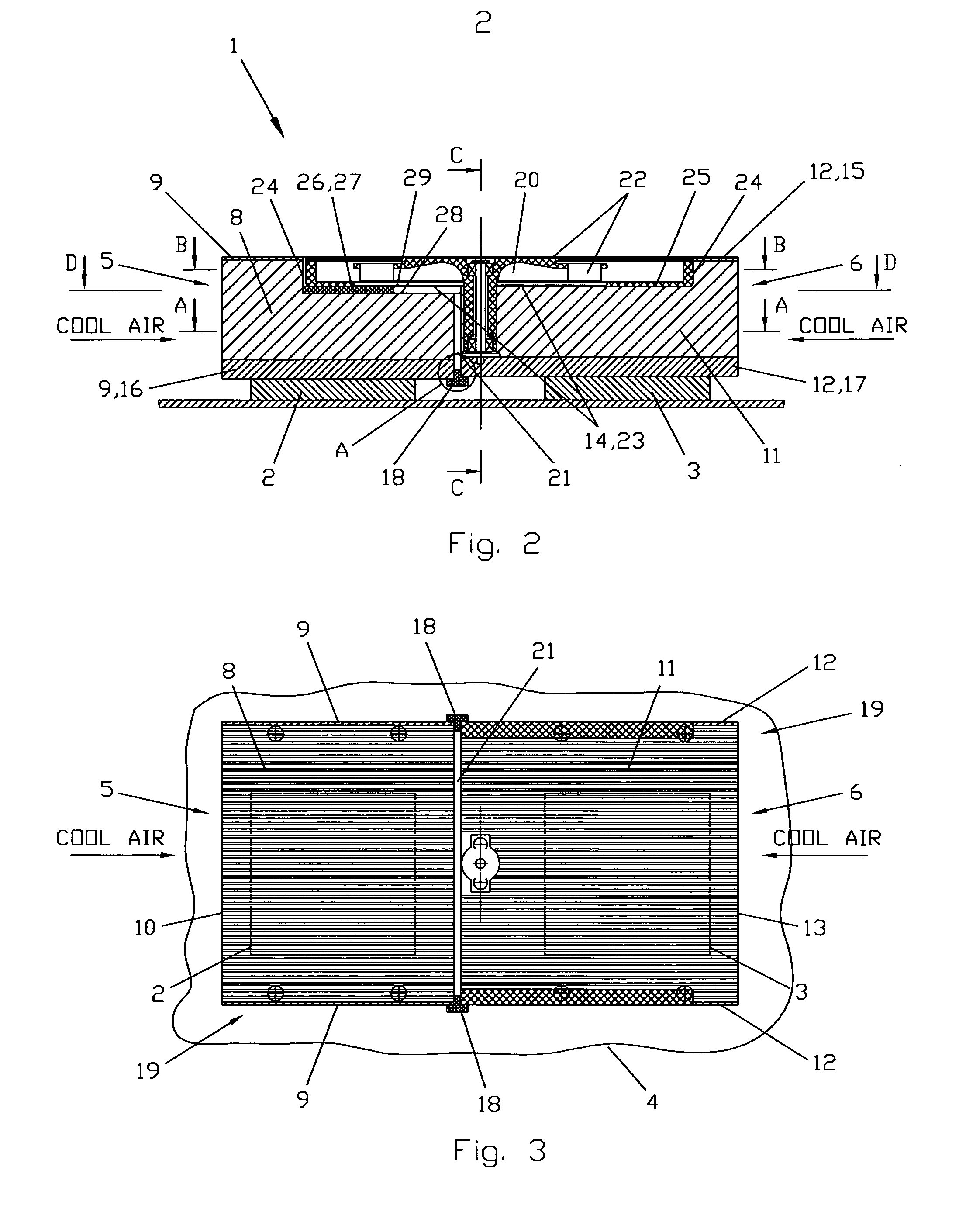Multi-heatsink integrated cooler
a multi-heatsink, integrated technology, applied in the direction of cooling/ventilation/heating modification, semiconductor device details, semiconductor devices, etc., can solve the problems of difficult to connect the housing directly one to the other, and the common airflow system is difficult to form, etc., to achieve maximum efficient cooling, reduce the effect of heat loss and high efficiency
- Summary
- Abstract
- Description
- Claims
- Application Information
AI Technical Summary
Benefits of technology
Problems solved by technology
Method used
Image
Examples
Embodiment Construction
[0033] Claimed invention will be described in detail below with reference to the accompanying drawings on FIGS. 1-12.
[0034] In the first embodiment (FIGS. 1-6) a multi-heatsink integrated cooler I for direct cooling of two electronic components 2 and 3 located on a common horizontal board 4 comprises two heatsinks 5 and 6 and one common radial blower 7. The heatsink 5 comprises heat-exchanging means 8 and a housing 9 with an inflow opening 10. The heatsink 6 comprises heat-exchanging means 11 and a housing 12 with an inflow opening 13 and an outflow opening 14 located in the upper part 15 of the housing 12. The heat-exchanging means 8 and 11 are made as fins. Each of said heatsinks 5 and 6 is located independently in tight contact with one of said electronic components 2 and 3,—the heatsink 5 on the electronic component 2 and the heatsink 6 on the electronic component 3, so the lower part (providing thermal contact base) 16 of the housing 9 of the heatsink 5 is in tight contact wit...
PUM
 Login to View More
Login to View More Abstract
Description
Claims
Application Information
 Login to View More
Login to View More - R&D
- Intellectual Property
- Life Sciences
- Materials
- Tech Scout
- Unparalleled Data Quality
- Higher Quality Content
- 60% Fewer Hallucinations
Browse by: Latest US Patents, China's latest patents, Technical Efficacy Thesaurus, Application Domain, Technology Topic, Popular Technical Reports.
© 2025 PatSnap. All rights reserved.Legal|Privacy policy|Modern Slavery Act Transparency Statement|Sitemap|About US| Contact US: help@patsnap.com



